It has been three years since, in the middle of the difficult lockdown, Sanda Agalides left us in her physical form. Her presence remained, perhaps even stronger than before among those inspired by her. A breath concerned with what exists in reality but cannot be named, a figure whose substance binds many relationships between many of those who remain and some who are gone. I graduated the same faculty as her, History and Art Theory at The National University of Arts Bucharest, but in very different decades, and I collaborated with the same magazine like she did around my age, Revista Arta, at huge distances in time. I met her in high school, the first time we had a discussion about hydrangeas or magnolias and the horoscope at CNDB. A few months after, I wrote her and she invited me to her house. She was a great companion for intellectual exchange, spirit and human experience to whom I could devote pages upon pages.
An almost mystical figure with disproportionately large and understanding eyes, she resembled Master Yoda in physical presence and personality, belonging to an archetype that is important to encounter and hold close as much as possible. Sanda experienced a lot of suffering; I had the feeling that her neuroses felt exactly like mine. Her observations about the world were composed of phrases that intentionally covered only part of what they wanted to say, the rest was spirit. She was married to the ghost of Romanian dance, Stere Popescu, and from her adolescence and, later, in her youth she connected with the most important names of Romanian art, names that could be found both in her own home, as well as within the collections of important galleries – Horia Bernea, Paul Neagu, André Cadere. These are just some of the artists whose intimate processes she could understand.
From college until her death, she was accompanied by another strong friendship, with Anca Oroveanu. After Stere’s death (speculated by many to have been a murder, but recognized as a suicide), Sanda will embark on a quest to understand what she felt in Paris. From there, she will arrive to California thanks to her uncle Gene Agalides, who was studying eels for NASA. She will initially study in San Diego, where she will receive support from the Antins, and then in LA, where she will go on to teach at the California Institute of Arts (CalArts). She was considered an important influence by the students there, and her personality will remain infused in the atmosphere of that scene. Many years later, she will return to Romania, where she will live in an apartment in Berceni neighborhood, left by her parents, where she ignites new friendships, and continue her older ones. My attempts to summarize her life seem to me still a vulgar act, as I realize that even now, I know I cannot fully grasp the full depth of her persona. I will continue this in memoriam another day, as I feel there are still some voices that need to be read.
“Sanda Agalides appeared in my life as if by magic just as I, together with Florin Flueras, was researching her husband Stere Popescu – the late architect and choreographer, the love of her life. She responded positively on our request to participate in our project and contributed generously to the remaking of Stere’s ballet, The Hammer without a Master, from 1965. Sanda became a colleague and a friend who enriched my existence in Bucharest. We would take walks and talk about life and art and dream of projects we could do together. We stayed in touch for as long as life allowed us. The last postcard I wrote her was from San Diego three years ago. While I was there, in the city where she studied, I was reminded of the impact she made on all her students there, and of the impact she made on me. Sanda was warm, smart, creative and she dressed colourfully; always with a thin woven headband around her hair: Californian alternative hippie-style.
When I think of Sanda I see sunlight, colours and an exotic flower in a grey concrete jungle, with a great sense of humour. May her energy follow all who loved her for the rest of time.”
Brynjar Åbel Bandlien, choreographer and performer
“Frankly, I always felt Sanda and I had a kind of cosmic connection. I met her soon after she first arrived in San Diego, where she was getting her Master’s in art history at UCSD; I was then a grad student in their Lit. Dept. (after that, I began teaching workshops in their lit/writing major). I was then the President of the United Artists Coalition, a downtown arts group which put on performances, and visual art shows. We also critiqued the mainstream arts administrations for basically setting up bureaucracies to fund themselves while giving no money to artists to make public arts projects. Sanda became an important member of that group, despite her (very long) pending status as a refugee, which meant she needed to keep a low profile. She had a key part in the performance I did, ONE TOO MANY WAYS OF LOOKING ANITA BRYANT, as well as a reading I did at Cal Arts years later.
I edited a magazine for the San Diego/Tijuana region, CRAWL OUT YOUR WINDOW, from 1974-1989. Sanda was a frequent contributor: the first times she was doing ‘creative writing’ in English. She often said that she felt her life here was a ‘language experiment’ which gratified her immensely. When she moved to LA to get a Ph.D. at UCLA, we (myself and my partner, Joe, who also adored Sanda) visited her frequently. It was wonderful to visit the city’s museums with her: she had enormous amounts of information, and the keenest, most unique take on the works we were seeing. She was living with her uncle then in L.A. (He was unbelievably proud when she was listed in the reference book, WHO’S WHO IN CALIFORNIA – he was the only person I knew who actually bought that book!) His death was devastating to her.
I introduced her to my old friend and comrade (we were quite active in the anti-Vietnam war protests and beyond), Leslie Bolinger. They became close friends, too: we’d all go to the desert, east of here, as often as possible. We used to fantasize about buying a house out there when it was so cheap. For two quarters, Sanda was teaching both at CalArts and at UCSD. The weekly commute was exhausting: she’d arrive at my house; we’d eat and drink, then go to Leslie’s – she lived nearby: Sanda stayed there for two quarters. Speaking of being exhausted, sometimes (we might have been smoking pot, though I was the pothead then, not her) late at night, she’d start speaking to us in Romanian. It was immensely flattering.
Sanda complained that some of her students at CalArts were impatient with her accent. But as far as I could see, she was quite beloved: we met a number of her very devoted students. I believe her presence there was unique: the critical studies section of the school was small and she taught courses that would never have been offered under any other circumstances. When she retired from CalArts, her pension was too small for her to remain in LA. We were all VERY sad when she left. She and I continued communicating by email, phone and letter.
Sanda came back to visit San Diego twice. She was shell-shocked when she initially returned to Bucharest: her refugee status took like a decade and a half to come through; she hadn’t seen her mother or other family members in that time. When she visited So-Cal, she was similarly shell-shocked in this land of sun and youth. I remember her reading Rilke helped a lot during one of those trips.
I knew Sanda for many decades. Bit by bit, she told me stories about her past, especially how her father had been jailed for being a ‘capitalist’ (sic) and about the character and fate of her late husband. She’d gone through so much trauma and pain, but was always so aware, so curious, uniquely analytic and thoughtful about everything, especially concerning politics here. I think when she first arrived in the U.S. she had some ideas about Vietnam, for example, that were simply antithetical to whatever Russian propaganda had been put out. We also talked a lot about the civil rights movement, how minorities were treated in the U.S., and the oligarchic nature of the government. She was an avatar of avant-garde art, and at the same time, she deeply appreciated art objects (not just conceptual or theoretical movements). I loved Sanda profoundly, and will always miss her deeply.”
Mel Freilicher, author and publicist
“It was my first year in a fancy top shelf private art school with a reputation for critique and theory. I was very insecure because of my so-called learning disabilities. I was worried I might not be caught up. As well read or informed as I should be, after all this was CalArts and had a heady reputation. I think Sanda’s art history class was required of all first-year students and during the first lecture I thought: ‘Holy shit, I don’t get this at all any of it’. Sanda would hand out xeroxed reading assignments, would often show seemingly random collections of slides and would lecture. It sometimes seemed as if she chose random images and just improvise her diatribe.
Soon, I started to appreciate certain genres of art or artists that I didn’t understand before. It was about learning the language and digging into understanding more conceptual and academic theory inspired artworks. I already was a competent artist, had done performance, synth punk, and rock n roll and CalArts had more of a role to teach artists to think. Her lectures went everywhere and sometimes seemed nonlinear, she could conjure up a group of genres, pieces, movements, and connect them through cultural, historical, philosophical, political or theoretical terms. She was very intelligent and well educated and wise. Sometimes her intensely complex lectures could begin to lose me. Many times, I left class because maybe I would grasp an important concept, get the message on a topic and would leave as I knew that if I stayed, her complex and detailed teaching might drown one newly gained understanding and I’d leave class to absorb this new understanding. Very often her class covered so much information that it could be overwhelming. Sometimes I would just fall asleep. Sanda never minded this and understood that with everything she covered, some things were bound to stick.
She taught me how to appreciate art that I hadn’t liked prior, studying art theory and critical thinking was about learning the words and context of the language of historical, cultural, and socio-political situations that influenced or inspired certain works. Her job was to teach us young artists how to think, be critical, and also to be able to break down why and what was attempted to be said with our own art.
One time, she taught a dissidence, terrorism and resistance class, she had us reading The Gulag Archipelago, different manifestos, we looked at everything from 60s radicals to real revolutions like Russia and China. Again, she had so much knowledge that it could be overwhelming, but I could always grasp something within all her complex, detailed and complicated connections. Sometimes, it’d get frustrating and then, all of a sudden, you would get some of what she was trying to say, if only a small part of her vast and complicated presentations. She knew this and would always say things, like how she understood this stuff was deep and could get exhausting and she would encourage us to sit in the back and take a nap. Sanda was very easy going about the academic setting.
She got me for the first time to get into doing research for a report or essay. I’d go into the library with a shopping cart and fill it up with any book that even mentioned the subject I was investigating and there was a time I came up with some info about an artist I had to write on that she never knew. She had a way of making this heavy complex scene and sometimes it could be very boring, but then you would pick up a nugget of understanding and all that boring stuff could suddenly become exciting. I love her for that. When I met with her, we would have long talks about whatever and that’s how we became friends. We kept in touch after CalArts and I’ll always miss her.”
Michael Griffin, painter, sculptor and musician
“I met Sanda Agalides through her friend and CalArts colleague Mathias Viegener. She was living at a beautiful apartment complex at the edge of Elysian Park – the same complex Sylvère [Lotringer] and I lived in during our first months in LA – and I sought her out because I’d started working on a book (Torpor) that had a lot to do with Romania. I interviewed Sanda informally a couple of times for the book, and was struck by some troubling things that she said. She asked me to meet at 8 instead of 6, I remember, ‘because I have difficulty with the transition between day and night,’ and summing up her experience there, she said: ‘It is difficult to remember. It is also difficult to forget.’ Although she was a completely functional person, she seemed traumatized by her experience living in Romania during the Ceaușescu years, though I don’t recall her talking about any specific experiences. I think her mother was still living there, she was concerned about various difficulties her mother was facing – Sanda was very protective of her.
I respected her as a scholar, but talking about Romania was really the point where we intersected. After I’d come back from a research trip to Arad and Bucharest in 2000 – confused and a little traumatized myself – she helped me make sense of it.
She was a literary person, but also highly trained in linguistics and philology – and teaching at an art school, where not many students had the background to understand all of her work. Nevertheless, she connected strongly with the students, who had a lot of respect and affection for her. This ability to reach beyond her specialized discipline and meet people on their own ground really impressed me. She was a remarkable person and scholar.”
Chris Kraus, writer, filmmaker and performance artist
“I arrived in Los Angeles in 1987 fresh from Grad School and was introduced to Sanda by our teacher, David Antin of UC San Diego. She was a friend and a guide as I made my way from the pastoral landscape of the university through the puzzling and rough art world of 90’s Los Angeles. Her outlook was shrewd and wizened and I often ran things by her as I dealt with the duplicity of the art world. At one point, she wrote an article for a dealer who would later run one of the leading LA galleries – at that point working for another gallery but on the move, as it were. I followed up and we had some meeting where some of the work was shown and the only response I can recall was a shrug, a brief pause as if to say ‘thanks for coming in’. Sanda’s comment was: ‘well, we tried our hand at duplicity as the game is played and came up as empty handed as we started out. Let there be a lesson.’
Sanda lived, when I first knew her, on Poinsetta Way in West Hollywood, and then in Echo Park. Each place had its own magic. At the Poinsetta apartment the halls were narrow and the ‘loud Russians’ lived upstairs. She lamented there were always the loud Russians at the horizon. I remember in the heat, one time, we had tea and biscuits on an old rickety back staircase where a portion of the wood was split and coated with many layers of paint. The treads of which were covered with Astro-turf. Sanda had the ability to disregard the particularities of the context with an insistence on the acts of society. We were engaged in a convivial and, more or less, agile discourse. Ignore the fact it was on a purported fire escape that in all likely hood might start the fire rather than be the means for deliverance from it. It was a déjuner sur AstroTurf.
Sanda once stated: ‘Moments exist forever – they are immune to the vagaries of time and space and are not, in the absolute sense, ever lost or forgotten.’ She had a way, by fiat, of waving away the difficulties of existence – be it the impermanence of life or the hot siren filled, back stairway of the chosen picnic spot – and to assert the primordial magic that follows when in true dialog.
Sanda Agalides, I thank you till the end of the shared dialogic time with me.“
Jim McAninch, sculptor
“I don’t remember her as someone who was forming her intellectual ideas as intellectual ideas. I feel like she had this idea to look deeply and with love at everything and everyone and to try to find beauty and wisdom everywhere. I was a teaching assistant for a couple of her classes and I was talking with her as I was still her student even though I wasn’t. I never knew her in class or outside of class to express a need for students to hear an intellectual idea. Her interest as a teacher was not in showing intellectual ideas, she was not interested in that. I feel like what she taught, and what has become part of my life, is looking with care at everything and finding special moments, special ideas, special objects, experiences everywhere. For Sanda, this may have been a response to growing up in a totalitarian space where everything is prescribed. Maybe in response to this, she delivered the opposite of prescribed categories to explore from below. If the totalitarian system came from above with answers, Sanda came from below with questions. In a totalitarian system, the path is there, everything is determined. In a system that is not totalitarian, you have to deal with the obvious imperfection. She had an aversion towards happy endings. The totalitarian certainty had something that she worked against. She had a deep aversion towards superficial certainty.
Her philosophy was to be invisible. She accomplished something very important: to be central, yet invisible and uncertain. And I think she developed that approach because of her experience with totalitarianism. As I recall her, she had an aversion for everything that seemed or looked too good. She had an aversion for everything that fitted too well. She lived in the spirit of the ’60s aesthetics of broken pieces, where beauty wasn’t defined by smooth formulations or by the perfect happy ending, but which resided in the pieces, the complexity, the unrefined. Sanda can be described as someone modest, moderate and considerate. She wasn’t someone who judged immediately, but she was someone who judged.
I was required to take an art history course at CalArts and I started as a graduate student without any art background. I had some authoritarian ideas about how art history should be taught. And I spoke with Sanda and she told me that her way of teaching art history was through inquiry and exploration, rather than through information delivery. She took her students by the hand and went exploring together. Even by CalArts standards she was more open than the other teachers. She had a more extreme dimension of teaching than most of the teachers I had. There wasn’t a particular type of student for whom Sanda was important, and that’s because of her power to listen deeply. There was such a variety of students that loved her. It’s common for a professor to be formative for their students but not to such a degree of diversity.
Her power consisted in her deep listening that could reach any student, that’s way she was so important for so many of them. I think that’s the key for why so many different people offer the same recollection: this impossible idea to be there for everyone. As a teacher you want to resonate with every student and Sanda lived for that.”
David Reed, educator
“Sanda’s favourite word was provocation. She was mindful of how everything created an interaction, but considered the outcome was never ending, it’s impossible to know, even in the future. She fractured what was considered art, she was searching for what was hiding beneath the surface. She influenced so many people who went to CalArts. Sanda was not political at all; she was the opposite – she had no patience for that at all – and she coached me on how not to react.
‘If you want to understand painting, if you seek the operation behind the meaning of the artwork, follow the animals.’ She watched animals. That’s how she gave me tools to understand art.
Sanda chose the students that she wanted to spend time with. None of the people that were around her were similar, but all of them were brilliant. Some were successful in their careers, others were not. The importance that I felt in knowing Sanda is the same importance I recognize in the other people I know were close to Sanda. It’s the same!”
David Allen Burns, visual artist
“Sanda was my teacher while I was a student at CalArts. I took her art history classes in 1988-1990 mostly, but I also knew her later, when I was doing my Masters between 1996-1998. If I recall, she taught art history from the ancient Greeks and through to the Modern period. She held her classes in one of the main auditoriums, and her lectures were always accompanied by a number of slide carousels full of pictures. As a young student, her classes were an important part of the study program – she was the only one teaching art history as I recall. And so, every student who came through the BA program had her as a teacher. I can’t imagine how many students she touched.
Looking back, I think one of the wonderful things about her classes was how she worked at providing a ground for what it might mean to become a contemporary artist. While so many of the other teachers and professors were focusing entirely on contemporary issues, on conceptualism, on identity politics, there was something timeless about Sanda, and this was also because of her amazing accent! I think we as young American students were a little bit mesmerized by the mystery of her – she came from a faraway place nobody really knew anything about (at some point, after starting her classes, students did somehow learn she was from a country called Romania, which conjured dark images of forests and wolves, castles and of course vampires, and something about communism – well, sorry for the clichés! but that’s how it was).
Sitting in the dark auditorium, watching the slides go by, and listening to Sanda speak from out of the shadows for hours, was a hypnotic experience, which also lent a certain intellectual and performative magic to the learning experience. Outside of her classes, Sanda was also a striking figure – she stood out amongst the California backdrop of a well-tanned, overly optimistic and somewhat jubilant crowd, though she also surprised you with her sweet smile, and a way of looking at you coyly from behind her glasses, as if she knew something you would never really understand – as if she came from a place and time outside my own, and carried all that worldly knowledge with her (as an 18 year old California kid, having grown up on the LA beaches, listening to Sanda was like encountering a larger world view… it was probably the first opening for me onto a language of art that was transcultural…).
I can also remember, when on a certain day we were attending her class, Sanda surprised us by cancelling the class. Instead, we followed her over to the café, a lounge where students could hang out, grab a coffee and also watch TV. Sanda was extremely animated, she was really overwhelmed with something, that was clear, which was unusual for her – we did not often see her emotional side in class, so we were all wondering what was happening. She led us to the café and simply pointed to the TV – there was a news report going on, about the revolution in Romania. I remember seeing the Parliament building, and people on the roof, there were crowds and flags, and a lot of commotion, and there was Sanda looking struck with awe or excitement, I think she really could not believe what was happening. She did not say much to us, but I remember her talking to others in the café, saying things we couldn’t quite follow, but understanding that something drastic had changed, especially for her. It was a touching moment, as I think we saw a piece of the real Sanda, not only our art history teacher, but someone full of emotion and concern and history. And there was something also touching about the fact that she wanted to share this with others – for us to see what was happening, to witness alongside her this historic moment. We never did go back to class that day, instead we sat around watching the report, and overhearing Sanda talking with everyone. (To be honest, I’m not entirely sure if what we saw on TV was a live report, or sometime after, but still, I remember the intensity of it, and how important Sanda felt it was.)
When I returned to CalArts to undertake my Master’s, and being a bit older, I got to know Sanda more as a friend, not really a peer, but somewhere close to it. She was good friends with another professor, a writer named Bonnie Engdahl (trying to recall the spelling…), who taught literature. Bonnie was my supervisor, and so at times I would see her and Sanda at art openings and events, and got more acquainted with Sanda. Through these meetings, I saw another side to her, how incredibly smart and knowledgeable she was, and also how involved and understanding of the contemporary art scene in LA she was as well. And also, how fun and witty she could be! But still, she never fully lost a certain aura, her uniqueness.”
Brandon LaBelle, artist, writer and sound theorist
“Our offices where close to one another, so we had a very consistent contact. I could recognize in Sanda the alienation that I’ve seen in my parents who were German migrants. After 12 years as colleagues, we went together at everything at CalArts.
One day I came to her place and she took some whiskey and she said something unexpected: ‘Now I’m going to tell you the story of my life’. She told me about her mother and her father. Her dad was denounced by someone around him and put in jail. He also had an affair with another woman. He was released and his marriage was failing. When she was 11, she made her father move with back with her mother as revenge (she was very angry with both of them). Her husband, instead, was gay. He danced in Paris and defected and she found herself alone in Bucharest. When he committed suicide, she decided to go to Paris to find why he killed himself. Then she was invited by her uncle, a rocket scientist, to California, where she arrived in her quest to understand The West. Her uncle was the only family member she loved. She lived with him for 10 years and when he died, she felt alone again.
In San Diego, she met David Antin, who was a very formative intellectual and like family to her. Sanda had a very careful way of talking about Marxism (like David). She was a formalist, she paid attention to the shape of things, the process they took to get formed and the different meanings of those processes. A work of art never meant a single thing but was a solution to a set of questions. And the questions that the artist is conscious and the questions outside of the artist in themselves (the existential question, the formal question, the political question). There’s a lot of politics in the academy, at CalArts. Sanda was pessimistic, but always with a bit of optimism, after a meeting she would often say: ‘It was bad. It. was very, very bad. But it could be worse.’
When she left, she gave me a glass icon with a crack in it. And I looked at it and I thought that Sanda is an iconoclast, since she gave me a cracked icon. I know she was very interested in Eastern religion and the energy of the body and the Universe. She was very interested in performance art that was about embodiment.
Sanda was an art historian. When she spoke in front of the class, she always had a big table with wheels and a slide projector. That projector had an ancient role. This was one of her ancient habits, as if caught in time, in the Universe, which one day might not be necessary either. That object was so connected to her presence that Jim McAninch made a sculpture after it and gave it to her.
Sanda was very different from the other professors at CalArts, they had a very American, very pragmatic mindset. When Sanda came back from one of her journeys in Romania, she always had the same talk with the most conservative of the teachers. She was always asked how was it there. Sanda would always reply: ‘It was bad. Oppressive. The economy is bad. It was hard to see the family.’ The other professor always said: ‘But it will get better’ and Sanda always replied: ‘No, it won’t get better’. There was this repeated exchange, until one day the conservative professor said: ‘Just say the words: IT WILL GET BETTER.’ – the American magical thinking. And Sanda stopped the conversation with: ‘No. It won’t get better.’ This crystalized for me how Sanda’s way of thinking was different than the people around her. But Sanda had a deep interest in California as a case study, as place where things were always changing, and she appeared more connected with Asia, then with Europe.
She was very beautiful, very thin, but her style was very original, not necessarily fashionable, but with concern for patterns, shapes and colors. She cut her own hair and never went to a stylist. She was very distinctive in her appearance but she was always focused on the mind and not the looks. Sanda was unlike any other.”
Matias Viegener, artist, writer and critic
Many thanks to Marjam Oskoui.
POSTED BY
Bogdan Balan
Bogdan Bălan is a cultural journalist, art critic and cultural worker. He has collaborated with Goethe-Institut, Savvy Contemporary, Scena9, among others....
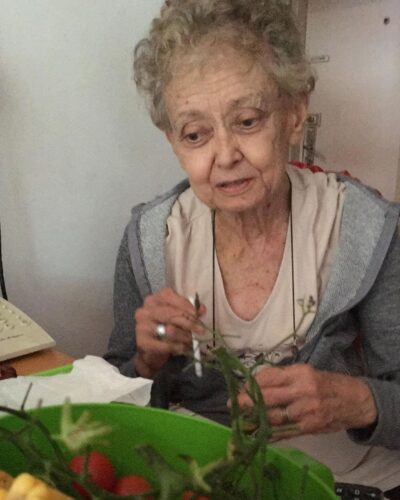
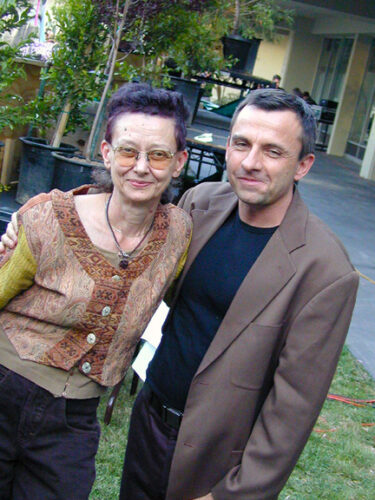
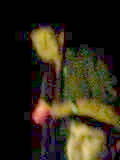
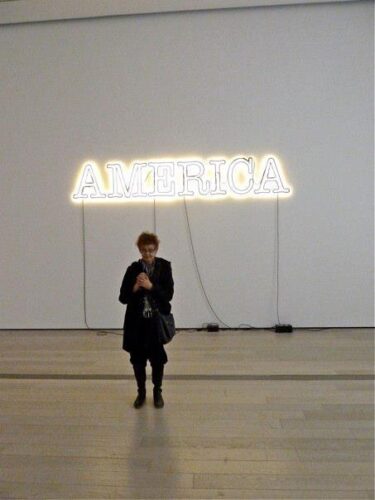
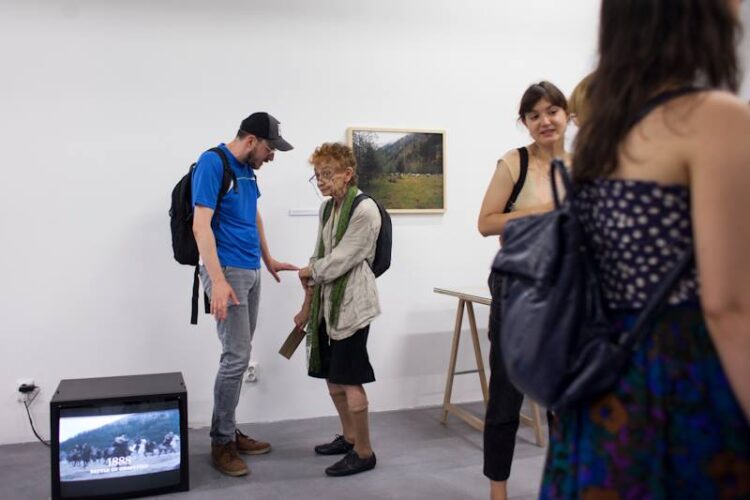
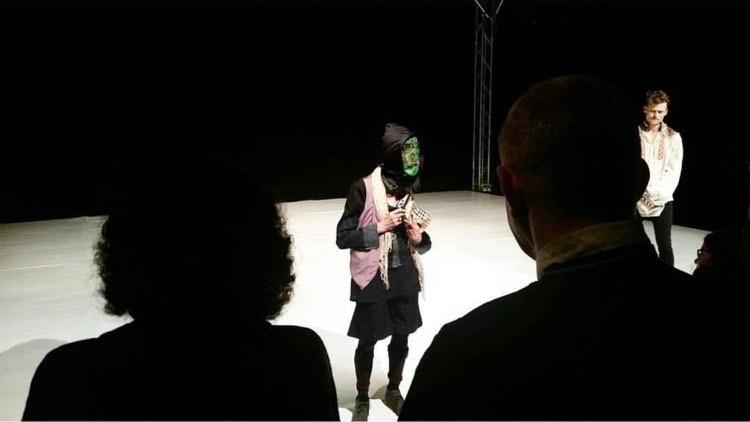
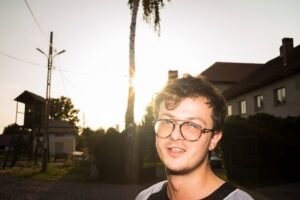
Comments are closed here.